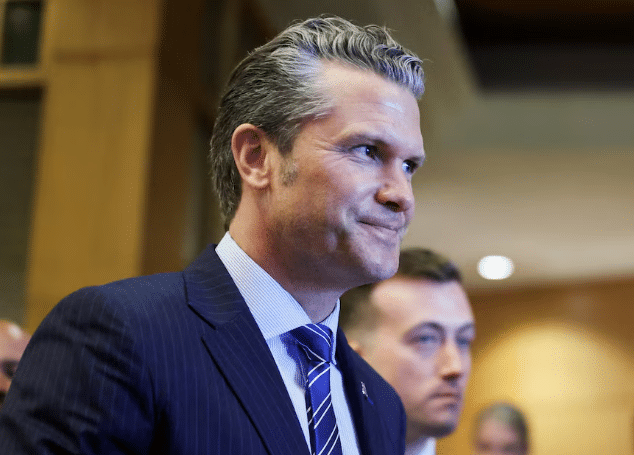
U.S. Defense Secretary Pete Hegseth on Friday launched a series of high-level meetings with defence counterparts from China and India at a key ASEAN security summit in Malaysia, underscoring Washington’s renewed push to reinforce security partnerships across the Indo-Pacific.
The meetings mark the first in a string of face-to-face engagements aimed at deepening defence cooperation with Southeast Asian and Asia-Pacific partners amid growing regional tensions.
U.S.–China Talks Address South China Sea and Taiwan Tensions
Hegseth met Chinese Defence Minister Dong Jun, where he reaffirmed that the United States would “stoutly defend its interests” and maintain a “free and open Indo-Pacific.”
According to the Pentagon, discussions touched on Chinese activities in the South China Sea and near Taiwan, with Hegseth expressing concern over Beijing’s recent military manoeuvres.
Beijing has continued to assert sweeping territorial claims across the South China Sea, a vital maritime corridor also claimed in parts by Brunei, Malaysia, the Philippines, Vietnam, and Indonesia.
New U.S.–India Defence Framework Signed
In a separate meeting, Hegseth and India’s Defence Minister Rajnath Singh signed a 10-year defence cooperation framework, describing it as “a cornerstone for regional stability and deterrence.”
The agreement is expected to advance joint exercises, defence technology transfers, and India’s review of planned purchases of U.S. military hardware.
Analysts view the deal as part of Washington’s broader effort to strengthen India’s role as a strategic counterweight to China.
Regional Outreach to ASEAN Allies
The U.S. defence chief is also scheduled to hold bilateral discussions with counterparts from Indonesia, the Philippines, and Thailand, among others.
Officials said these talks aim to expand maritime security initiatives and reinforce collective deterrence in Southeast Asia, where Chinese “grey-zone” tactics have raised alarm.
During talks with Malaysia’s Defence Minister Mohamed Khaled Nordin on Thursday, both sides condemned the use of coercive maritime activities.
“Grey-zone tactics—such as hydrographic surveys escorted by armed coastguard vessels—are provocative actions that undermine regional sovereignty,” Nordin said in a joint statement.
South China Sea Disputes and U.S. Security Commitments
China continues to defend its coastguard operations as lawful and necessary to protect national sovereignty.
However, neighbouring nations have repeatedly accused Beijing of harassment, ramming incidents, and interference with offshore energy projects.
The U.S., seeking to counter China’s expanding footprint, maintains multiple defence arrangements in the region, including a mutual defence treaty with the Philippines and joint military exercises with Thailand, Indonesia, and Malaysia.
At the ASEAN summit, delegations from Australia, New Zealand, South Korea, and Russia also attended as dialogue partners.
Global Defence Context and U.S. Strategic Goals
In Washington, President Donald Trump reiterated America’s long-term commitment to the Indo-Pacific, telling ASEAN leaders the United States was “with you 100% for many generations to come.”
Meanwhile, Trump announced plans to resume nuclear weapons testing, citing concerns over China’s rapid nuclear expansion.
Hegseth also urged Japan to accelerate defence spending to 2% of GDP, calling the U.S.–Japan alliance “critical to deterring Chinese military aggression.”
